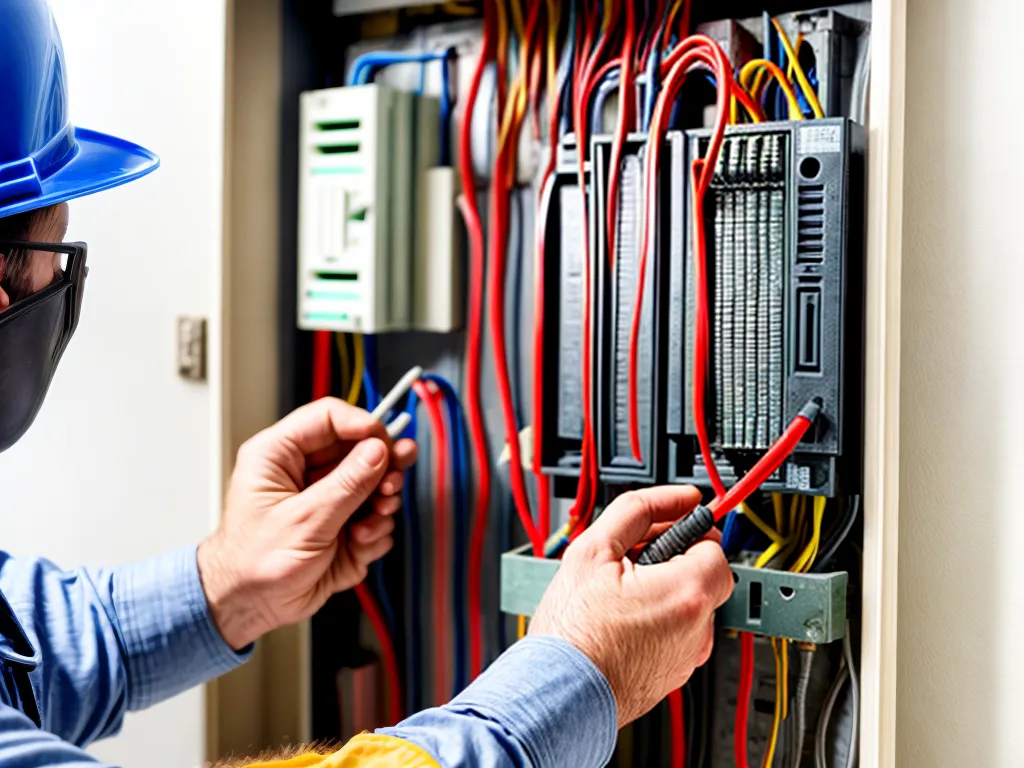
Upgrading your home's electrical panel can be an expensive project, but there are ways to reduce the costs involved. Here's what you need to know to save money on your next electrical panel upgrade.
Evaluate If You Really Need an Upgrade
Before deciding on an upgrade, carefully evaluate if it's truly necessary. An upgrade might be needed if:
- Your home's electrical demand has increased, causing frequent tripping of breakers. This indicates the panel may be overloaded.
- The panel is old and uses outdated technology, like fuses instead of breakers. This makes it unsafe and difficult to find replacement parts.
- You're renovating your home and need to expand the panel's capacity.
- There are signs of damage, rust or corrosion on the panel or wires. This poses a fire hazard.
If none of the above apply, you may be able to hold off on an upgrade for now. Installing AFCI breakers or rebalancing loads across circuits could alleviate issues for some time.
Shop Around for Quotes
Never decide on the first quote you receive. Contact at least 3-4 electricians to provide detailed quotes for your panel upgrade. Make sure the quotes clearly specify:
- The exact panel they will install, including manufacturer, model number, amperage rating and number of circuits.
- Whether the main electrical service will also need an upgrade.
- Any rewiring or conduit work required.
- All material costs and labor rates.
- Any building permits or city inspection fees.
Compare the quotes closely and ask questions to understand all aspects of the project scope. Avoid choosing based on price alone.
Choose the Right Amperage Capacity
When sizing your new panel, focus on amperage capacity, not just number of circuits. A 100-amp or 150-amp panel may be sufficient for a smaller home. Larger homes with more appliances may need 200 amps or more.
Don't oversize your panel extremely, as that will cost more without providing benefit. But do leave room for future expansion, as undersizing can lead to the same overload issues.
Consider a Load Center Replacement
A full panel replacement can be very expensive. A more affordable option is upgrading just the interior "guts" of the panel, known as the load center.
The existing enclosure, main breaker and wiring can be reused. Only the load center and circuit breakers need replacement. This achieves safety upgrades at a fraction of the cost.
Add Circuits Gradually Over Time
For a major renovation or expansion, you'll likely need to add several new circuits all at once. But for general home upgrades, you can spread out costs by adding circuits gradually over weeks or months, as needed.
Prioritize the essentials like kitchen outlets or washing machine first. Less critical circuits like outdoor lighting can wait awhile. Pacing upgrades reduces initial costs.
Use Cost-Effective Breakers and Materials
For breakers, standard residential grade is fine for a home panel. Commercial grade breakers are overkill and far more expensive.
Likewise, you generally don't need thick, conduit-encased wiring unless your municipality requires it. Less expensive NM cables enclosed in plastic sheathing are adequate for home use. Using these more affordable options cuts thousands off total upgrade costs.
Provide Access to Reduce Labor Time
Labor accounts for a major part of the panel upgrade cost. You can reduce labor time by making access as easy as possible for the electricians.
Clear away storage and clutter around the panel area before they arrive. Cut openings in drywall or install access panels if wiring will run through walls. Reducing the work needed lowers your labor fees.
Take Advantage of Off-Season Scheduling
Electrical contractors tend to be less busy during off-peak seasons like winter. Projects may take a bit longer due to weather, but you can often negotiate lower rates for off-season work.
You'll also have an easier time getting appointments scheduled during their slower periods. Timing your upgrade strategically during an off-season is an easy way to cut costs.
Summary
With smart planning and cost-cutting measures, you can complete your electrical panel upgrade at the lowest possible price. Focus on necessities rather than luxuries, shop around for the best value, use more affordable materials and leverage off-season scheduling to maximize savings. A strategic approach will help you upgrade safely while keeping your budget intact.